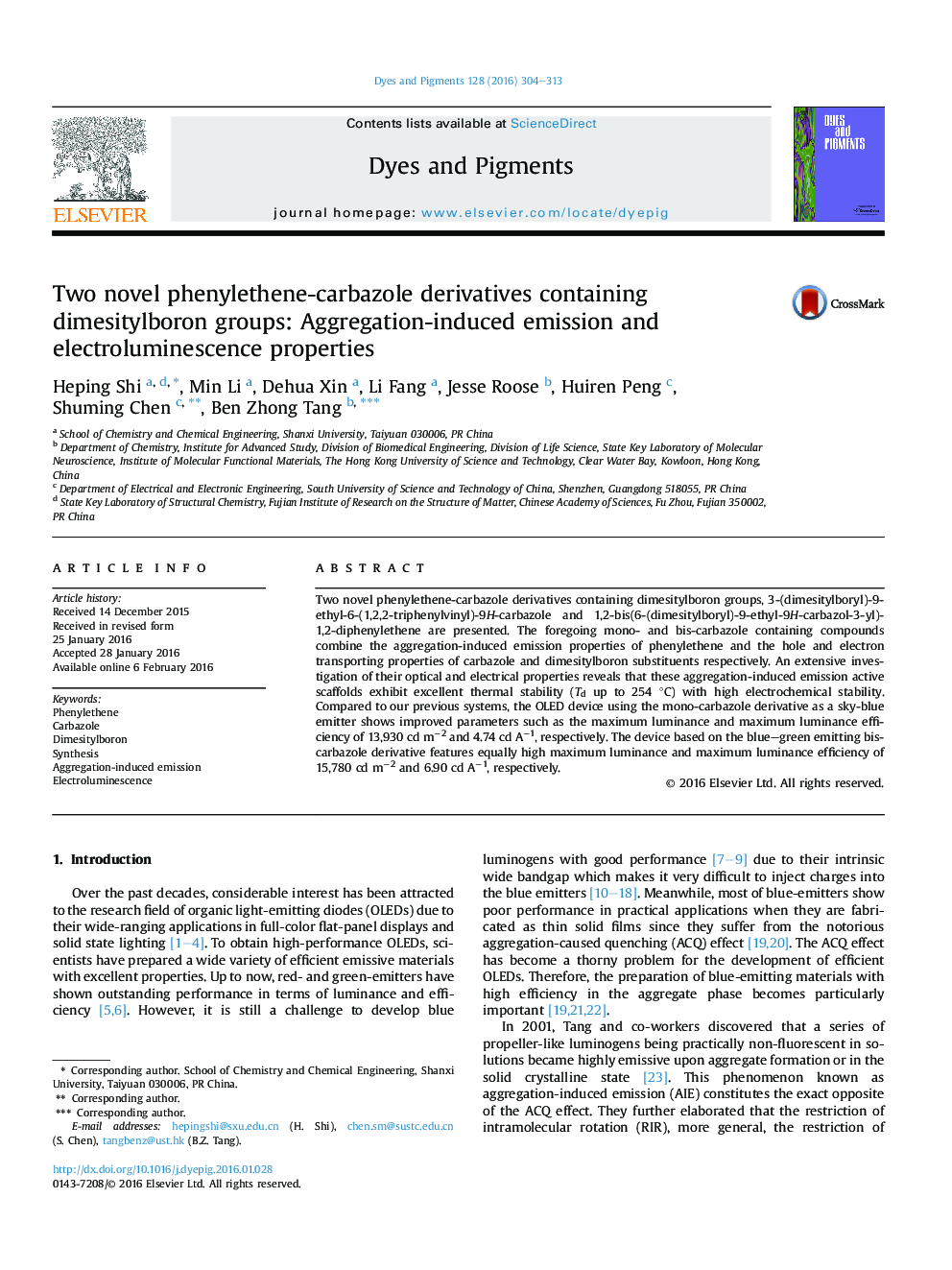| Article ID | Journal | Published Year | Pages | File Type |
|---|---|---|---|---|
| 175495 | Dyes and Pigments | 2016 | 10 Pages |
•DETPCZ and DECZDPE are synthesized by combining phenylethene, carbazole and dimesitylboron moieties.•These compounds exhibit aggregation-induced emission (AIE) properties.•Efficient non-doped electroluminescent devices fabricated with DETPCZ and/or DECZDPE show excellent performances.
Two novel phenylethene-carbazole derivatives containing dimesitylboron groups, 3-(dimesitylboryl)-9-ethyl-6-(1,2,2-triphenylvinyl)-9H-carbazole and 1,2-bis(6-(dimesitylboryl)-9-ethyl-9H-carbazol-3-yl)-1,2-diphenylethene are presented. The foregoing mono- and bis-carbazole containing compounds combine the aggregation-induced emission properties of phenylethene and the hole and electron transporting properties of carbazole and dimesitylboron substituents respectively. An extensive investigation of their optical and electrical properties reveals that these aggregation-induced emission active scaffolds exhibit excellent thermal stability (Td up to 254 °C) with high electrochemical stability. Compared to our previous systems, the OLED device using the mono-carbazole derivative as a sky-blue emitter shows improved parameters such as the maximum luminance and maximum luminance efficiency of 13,930 cd m−2 and 4.74 cd A−1, respectively. The device based on the blue–green emitting bis-carbazole derivative features equally high maximum luminance and maximum luminance efficiency of 15,780 cd m−2 and 6.90 cd A−1, respectively.
Graphical abstractFigure optionsDownload full-size imageDownload as PowerPoint slide
